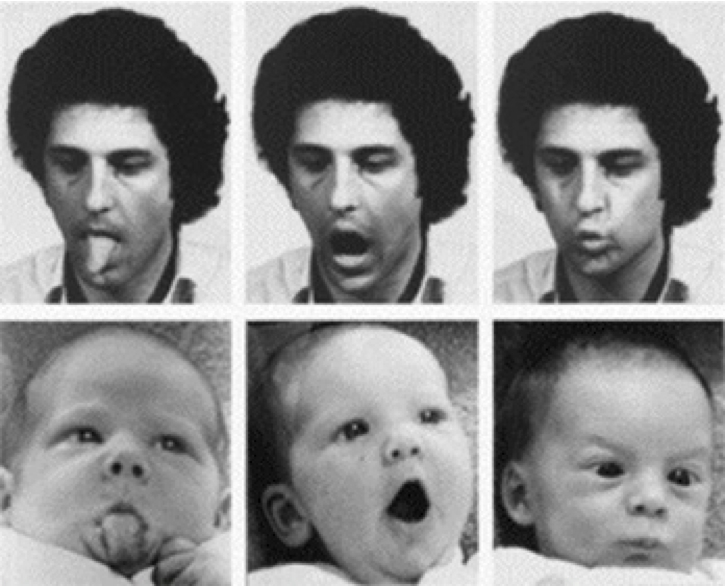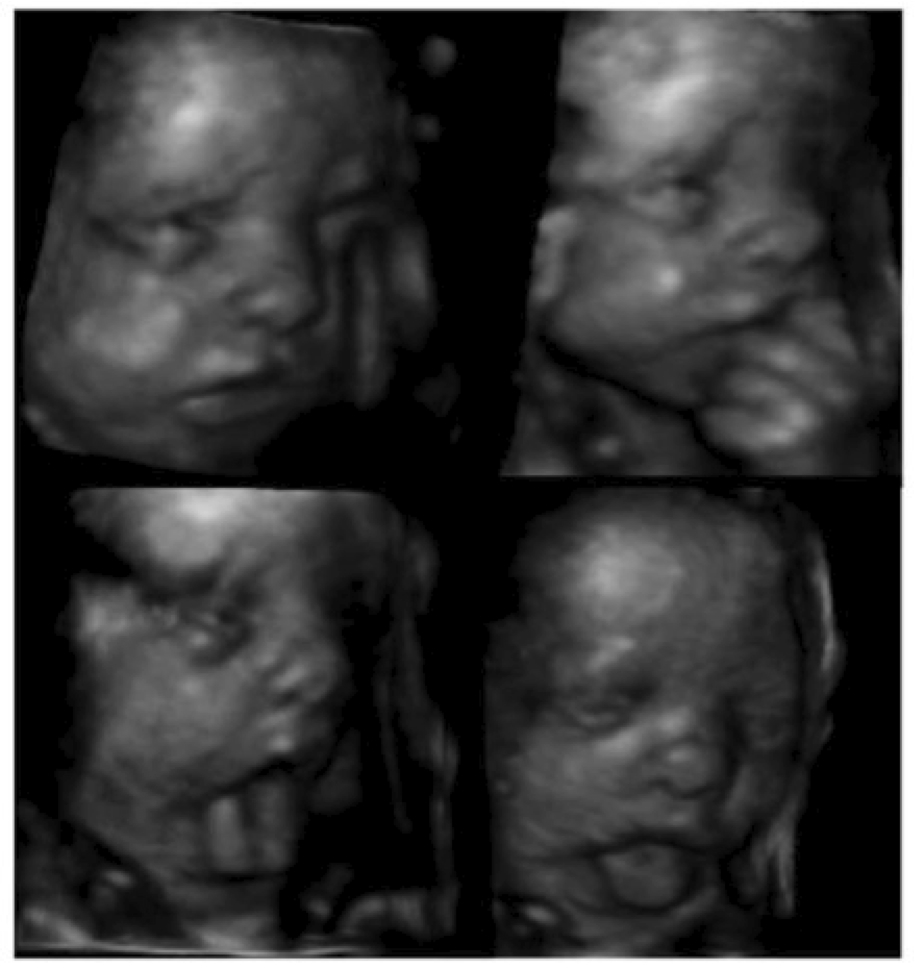
Do Neonates Imitate?
The Aero-Digestive Development Hypothesis
Collaborators: Kathleen Akins (SFU), Nazim Kevin (Wash U.), Lyle Crawford (SFU)
One of the most influential and striking claims in child development was made by Melzoff and Moore in their 1977 paper. There they claimed that neonates—human infants only a few hours old—could imitate facial expressions which they had never seen before. Moreover, this ability, claimed Meltzoff and Moore, was not a result of a primitive reflex or some other low level mechanism. Rather, according to Melzoff and Moore, neonatal imitation is genuine imitation : it is generative (displays both variety and novelty) self-correcting (aims at accurate performance), specific to the precise facial movement, and temporally flexible (executed from memory in the absence of stimulus and after a delay.)
This project is an extension of Nazim Keven's SFU MA Professional Paper on the same topic, in which he argued that the empirical evidence for neonatal was unsound and that there was another more basic explanations for the results of neonatal imitation experiments.
Here, we look at the single instance of neonatal facial imitation for which there exists robust evidence of imitation—namely, tongue protrusion. At least prima facie, Infant tongue protrusion appears to have the hallmark features of a neurodevelopmental behavior: it occurs spontaneously in utero along with a number of other facial expressions—mouth opening, grimacing, finger sucking, and yawning; it is a rhythmic, spontaneous motor activity that begins and ends at predictable periods on perinatal development; its failure to extinguish during the neonatal period correlates with neurological/developmental disability; and it can reappear later in life as a result of neural trauma or age-related neural deterioration. It is also seen in other Old World Primates and has roughly the same characteristics in these other species.
We argue that spontaneous tongue protrusion is indeed a developmental behavior that is essential to neural circuit integration—a rthymic, motor behavior that co-ordinates multiple sub-cortical motor nucleii involved in early aero-digestive behavior. It acts to 'prime' the aerodigestive system by creating proto-versions of the sub-cortical aerodigestive capacites required at birth—breathing, breath-feeding and non-nutritive swallowing. In making a case for this very basic function for tongue protrusion, we refer to a wealth of literature on perinatal general movements, primitive reflexes, the aerodigestive physiology in mammals, the mechanics of breast-feeding, the development of mastication, and the cortical/voluntary control of aero-digestive functions. In the end, we offer a plausibility argument for the role of tongue protrusion in aerodigestion: it is more plausible that tongue protrusion is a motor activity that serves to co-ordinate multiple neural circuits through sensory integration than it is that tongue protrusion occurs as one action resutling from an integrated system for the iimitation for facial expressions and other gestures. Nor is it likely that two such systems operate in tandem, one for aero-digestive development and one for proto-imitation. In the development of aerodigestion, potentially deadly errors in function are controlled by a set of safey 'features': no matter how immature the system, controls are in place to handle the kinds of mistakes that are made during aero-digestive learning. Given the many alteratives that are available for bonding between mothers and infants (apart from imitation) and the high probablity of a lethal intererence effects that would occur between two systems competing for tongue control, it seems unlikely that are two systems for tongue control, one social and the other areodigestive. We end the paper with some thoughts on why neonatal imitation experiments have the seemingly positive results that they do and the kinds of experiments that might be valuable to distinguishing between these two hypotheses.

In utero expressions of the fetus: grimacing, finger sucking,tongue protrusion to the side, and tongue protrusion in the midline, also called tongue thrust(Kuriak et al. 2004.)